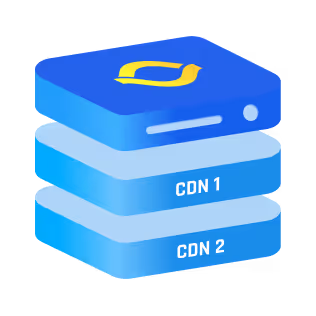Imagine trying to find your way through a city without street names or addresses—it’d be impossible to find your destination. That’s exactly how the internet would feel without Fully Qualified Domain Names (FQDNs).
These detailed digital addresses act like GPS coordinates for computers, pinpointing exact locations for websites, servers, or devices within a network.
What is a Fully Qualified Domain Name?
A Fully Qualified Domain Name (FQDN) is the complete and exact name that uniquely identifies a specific device or resource within a domain. Unlike a simple hostname, an FQDN includes every part of the address, ensuring no ambiguity.
Think of it as a full postal address for your network, guiding traffic directly to the intended destination without confusion.
For example:
- www.example.com is an FQDN.
- example.com is a domain name.
- www is the hostname.
The FQDN combines these elements to create a precise address, guiding traffic to the exact server or resource. Without an FQDN, network systems would struggle to differentiate between devices or services within large and complex domains.
Components of a Fully Qualified Domain Name
An FQDN is made up of several key components. Each plays a specific role in forming the complete address. Here’s a breakdown:
Each component works together to form a complete FQDN, ensuring clarity and accuracy in communication. When combined, these components form a complete FQDN like this:
hostname.subdomain.domainname.tld.
For example, the FQDN www.blog.example.com. fully specifies the resource, leaving no room for confusion. Additionally, some systems may display FQDNs differently depending on the use case, such as omitting the trailing dot for user-friendly purposes.
Benefits of Using a Fully Qualified Domain Name
Why is using an FQDN so important? Here are some of its key benefits:
- Accuracy and Precision
- FQDNs ensure that requests reach the correct destination, avoiding misrouting or errors. This level of precision is crucial for complex systems like email servers or database connections.
- DNS Compatibility
- The DNS system relies on FQDNs to resolve names into IP addresses (think CNames), making them essential for smooth network communication. Without FQDNs, the DNS infrastructure would face significant challenges.
- Network Management
- In large networks, FQDNs provide clarity, helping administrators easily identify and manage devices. For example, tracking devices like printer1.office.example.com becomes more organized with FQDNs.
- Enhanced Security
- By using FQDNs, systems can verify and authenticate connections, reducing security risks. Secure connections like HTTPS require FQDNs to issue certificates and establish trust.
- Simplified Configuration
- Many services, such as SSL certificates and email servers, require FQDNs for proper setup. For example, configuring an email server often depends on mapping the FQDN to its specific IP address.
{{cool_component}}
Use Cases for Fully Qualified Domain Name
FQDNs are used in a wide range of scenarios. Here are some practical examples:
- Website Hosting
- Configuring an FQDN ensures that visitors are directed to the correct server when they type in a URL. Without an FQDN, users could encounter incorrect destinations or connection errors.
- Email Servers
- Mail servers like mail.example.com rely on FQDNs for accurate routing of emails. Each server’s FQDN helps in organizing mail transfer and ensuring successful delivery.
- Secure Connections
- HTTPS and SSL certificates require an exact FQDN to establish secure connections. For instance, an SSL certificate for secure.example.com will not apply to example.com unless explicitly stated.
- Network Devices
- Routers, printers, and IoT devices often use FQDNs for identification and access. Assigning FQDNs makes it easier to locate specific devices in a complex network.
- FQDN Lookup
- Network administrators frequently perform FQDN lookups to resolve connectivity or configuration issues. Tools like nslookup or online services simplify this process.
FQDN vs. Hostname: What’s the Difference?
It’s easy to confuse a hostname with an FQDN, but they serve different purposes:
In short, an FQDN includes the hostname but adds the necessary details to make it globally unique. For effective communication between devices, knowing when to use an FQDN over a hostname can make a big difference.
How to Check an FQDN (FQDN Lookup)
If you need to verify or find an FQDN, here’s how you can do it:
- Using the Command Line
- On Windows, macOS, or Linux, type the following command:
nslookup [FQDN]
This will show the corresponding IP address and DNS information.
- On Windows, macOS, or Linux, type the following command:
- Online Tools
- Several websites offer FQDN lookup services. Simply enter the FQDN to retrieve detailed information. These tools are user-friendly and widely available.
- DNS Settings
- Check your network’s DNS configuration. Most DNS servers list all the FQDNs associated with the network. Understanding these settings can help troubleshoot and manage your network.
Common Misconceptions About FQDNs
When it comes to Fully Qualified Domain Names (FQDNs), a few misconceptions often lead to confusion, especially among beginners in networking and IT.
Let’s clarify some of the most common misunderstandings:
- All URLs Are FQDNs: While an FQDN is part of a URL, it doesn’t include the protocol (like https://) or file paths. For example, www.example.com is an FQDN, but https://www.example.com/page is a URL.
- FQDNs Equal IP Addresses: FQDNs are human-readable names, while IP addresses are numerical and used for routing. DNS translates FQDNs into IPs for easy navigation.
- Hostnames Are FQDNs: A hostname (like server1) is just the device’s name. An FQDN (like server1.example.com) includes the full domain and TLD.
- Subdomains Aren’t FQDNs: Subdomains like blog.example.com are part of the FQDN, adding more detail to the address.
- FQDNs Always End in a Dot: Technically, FQDNs end with a trailing dot (www.example.com.), but this is usually implied and omitted in daily use.
- FQDNs Are Only for Websites: FQDNs are also used for email servers, network devices, and IoT systems, not just websites.
- FQDNs Are Optional: While local hostnames might work within small networks, FQDNs are essential for accurate global communication.
Conclusion
A Fully Qualified Domain Name is a fundamental part of how networks and the internet function. By providing a precise and complete address, FQDNs ensure that traffic is routed accurately, whether it’s for websites, email, or network devices.



.png)
.png)
.png)






